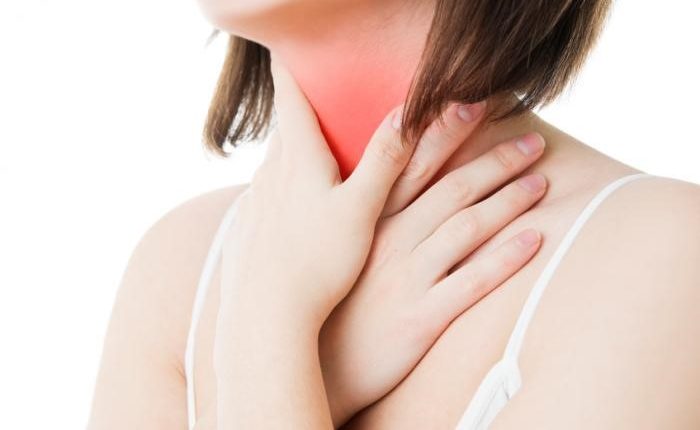
Oesophageal achalasia: symptoms and how to treat it
Oesophageal achalasia is a disorder related to the difficulty in swallowing both liquid and solid food. This is due to the failure to open the valve between the stomach and oesophagus (lower oesophageal sphincter) and the lack of motility (movement) of the stomach walls, which prevents the correct passage of food
The causes of oesophageal achalasia
Unfortunately, the causes of this disease are still unknown, although viral infections or autoimmune diseases are suspected as the cause of oesophageal nerve plexus dysfunction.
Oesophageal achalasia, the symptoms
The main symptom of oesophageal achalasia is dysphagia, i.e. the sense that the food bolus has stopped in the oesophagus after swallowing.
It is most common following the ingestion of solid foods, but in some cases it can also occur after the intake of liquids: in this case it is called paradoxical dysphagia.
Other symptoms can be
- regurgitation of undigested food which, by entering the airways, can also cause pulmonary infections ab ingestis (i.e. from ingested materials);
- chest pain, often radiating to the back, which, in terms of intensity, may mimic heart disease;
- sialorrhoea, i.e. a state of hypersalivation;
- weight loss and related malnutrition.
Diagnosis
In the case of suspected oesophageal achalasia, in addition to the clinical examination and anamnesis, the diagnostic tests to be carried out are of various types.
X-ray study of the oesophagogastric transit: this simple examination is carried out by taking a contrast medium by mouth, which makes it possible to visualise the oesophagus and the passage between the oesophagus and the stomach (cardia).
In the achalasic patient, there is often a variable degree of dilatation of the oesophagus, a slowed down and threadlike passage of the contrast medium at the level of the cardia and the absence of a gastric bubble.
Esophagogastroduodenoscopy: usually performed to rule out the presence of neoplastic disease of the cardia.
Although it is not a specific test for the diagnosis of achalasia, it can reveal dilation of the oesophageal lumen, the possible presence of food debris, stasis oesophagitis and, above all, allows the endoscopist to assess the transit of the endoscope through the cardia, which usually occurs ‘with a jerky feeling’ in these patients.
High resolution manometry (HRM): this is the examination that allows the definitive diagnosis.
Through the transnasal introduction of a small probe, it is possible to assess the peristaltic activity of the oesophagus, the pressures and the release capacity of the lower oesophageal sphincter.
This examination allows not only the diagnosis of achalasia to be made, but also the differentiation of three different types (Chicago classification), corresponding to different alterations in oesophageal motility, symptoms and treatment approach.
How to treat oesophageal achalasia
Oesophageal achalasia is a rare disease in the population and is often diagnosed late.
Once detected, it is important to undertake a precise pathway of pathophysiological diagnosis and careful evaluation in reference centres in order to choose the type of approach that guarantees the best result in terms of symptom control.
With regard to treatment, there are several different types, each with its own effectiveness and indication for different targets.
Medical therapy with calcium antagonists
First of all, it should be noted that medical therapy with calcium antagonists has not proved effective in controlling symptoms, as it requires chronic treatment with numerous doses and causes poorly tolerated side effects such as headache and hypotension.
Botulinum toxin
Endoscopic inoculation of botulinum toxin can block the release of acetylcholine from Auerbach’s myenteric plexus (part of the enteric nervous system found in the external musculature of the grastrointestinal tract) by inhibiting smooth muscle and reducing lower oesophageal sphincter pressure.
The immediate effect is good, but the procedure is fraught with frequent recurrences and the need for repeated endoscopic procedures.
Pneumatic dilatation of the cardia
Another treatment is pneumatic dilation of the cardia. This involves placing a pneumatic oesophageal dilator (balloon) under endoscopic control at the level of the cardia which, by dilating the fibres, causes their release.
The effectiveness of this type of treatment is good, but 25% of patients require subsequent dilation.
This approach is preferable in elderly patients who, due to the presence of comorbidities (i.e. concomitant diseases), cannot be referred for surgery, or in patients who present with a recurrence of symptoms after surgical treatment.
POEM
POEM (per-oral endoscopic myotomy) consists of endoscopic sectioning of the muscle fibres of the oesophagus.
This technique is absolutely effective in resolving the symptom of dysphagia, but in spite of numerous studies, there are doubts about the method as it would seem to be burdened in the long term by the onset of gastroesophageal reflux and subsequent oesophagitis.
Surgery is considered to be the treatment of first choice, and if it is performed in reference centres, satisfactory results are obtained in more than 85% of those operated on.
Heller myotomy
The Heller myotomy is a surgical procedure performed under general anaesthesia using a minimally invasive videolaparoscopic technique. It consists of a section of the muscle fibres of the oesophagus at the oesophagogastric junction (5 cm on the oesophagus and 2 cm on the stomach).
The myotomy is combined with an anterior anti-reflux plastic according to Dor, which protects against the onset of postoperative reflux.
Read Also:
Emergency Live Even More…Live: Download The New Free App Of Your Newspaper For IOS And Android
Asthma, The Disease That Takes Your Breath Away
Gastroesophageal Reflux: Causes, Symptoms, Tests For Diagnosis And Treatment
Global Strategy For Asthma Management And Prevention
Paediatrics: ‘Asthma May Have ‘Protective’ Action Against Covid’
Esophageal Achalasia, The Treatment Is Endoscopic



